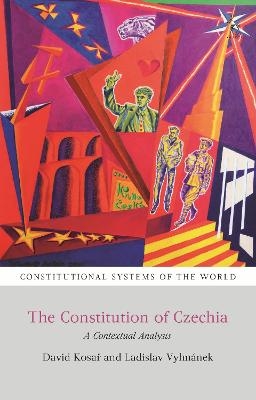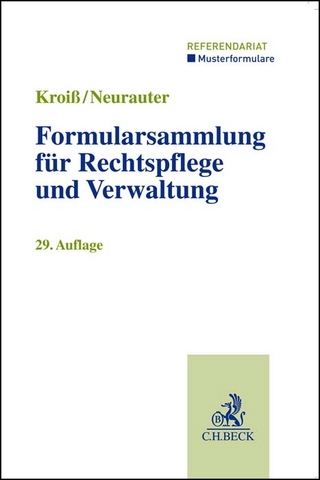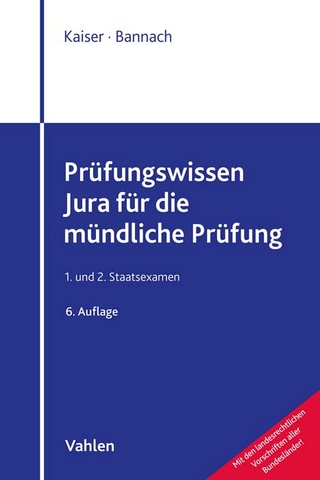
The Constitution of Czechia
Hart Publishing (Verlag)
978-1-5099-5282-3 (ISBN)
The book explores key topics including; the Czech pluralist constitution, constitutional principles, the interaction between the legislature, executive and the judiciary, the role of local governance and application of fundamental rights in practice. It also covers the morphing of Czech constitutionalism as a result of personal politics, conventions, informal institutions and constitutional narratives and sentiments.
This informative study allows students and scholars of law and politics to develop an informed view of how Czech democracy actually works and what its main challenges are.
David Kosar is Associate Professor of Law at Masaryk University, Czech Republic, and Head of the Judicial Studies Institute there. Ladislav Vyhnánek is Assistant Professor of Law at Masaryk University, Czech Republic.
1. The Rise of Czech Constitutionalism: History and Context
I. The Rise and Fall of the Kingdom of Bohemia
II. Influence of Foreign Legal Cultures
III. Czech Constitutional Scholarship and its Changing Role Over Time
IV. Inter-war Czechoslovakia
V. The Communist Legacy
VI. Democratic Transition and Dealing with the Past
VII. The Dissolution of Czechoslovakia
VIII. Return to Europe
IX. Where are the People?
X. Conclusion
Further Reading
2. The Challenge of a Pluralist Constitution
I. Drafting the 1993 Constitution
II. The Pluralist Constitution
III. The Eternity Clause
IV. International and Supranational Sources
V. Super-statutes
VI. Constitutional Conventions
VII. Judicial Decisions as a Source of Constitutional Law
VIII. Conclusion
Further Reading
3. Constitutional Principles
I. The Democratic Principle
II. The Rechtsstaat Principle
III. Principle of the Separation of Powers
IV. Principle of Sovereignty
V. Principle of the Unitary State
VI. Protection of Fundamental Rights
VII. The Implicit Welfare State Principle
VIII. Conclusion
Further Reading
4. The Czech Parliament
I. Basic Structure: The Chamber of Deputies and the Senate
II. Competences of the Parliament and its Chambers
III. The Procedural Limits of Parliamentary Power
IV. Parliamentary Elections and the Czech Political Party System in Turmoil
V. Scandals, Corruption and Immunities
VI. Conclusion
Further Reading
5. The Growing Tension within the Double-Headed Executive
I. The Challenge of a Double-Headed Executive
II. Over-achieving President and Under-achieving Governments
III. The State of Emergency and the Hidden Powers of the Executive
IV. The Quest to Depoliticise the State Administration
V. Conclusion
Further Reading
6. Local Governance
I. The Centre and the Periphery
II. The Structure of Territorial Self-Governance
III. Election of Municipal and Regional Bodies
IV. Direct Democracy at the Local Level
V. The Rise of the Municipal Power
VI. It is All About Taxes and EU Subsidies
VII. Local Self-Governance in the EU
VIII. Conclusion: Towards Moderate Decentralisation
Further Reading
7. The Judicial Branch
I. Setting the Scene: Key Players within Czech Judicial Politics
II. Who are the Czech Judges?
III. The Constitutional Court
IV. Basic Features of the Ordinary Judiciary
V. Civil and Criminal Courts
VI. Administrative Courts
VII. Prohibition of Special Courts and Tribunals
VIII. The War(s) of the Courts
IX. Czech Courts and European Supranational Courts: A Complicated Relationship
X. Constitutional Politics of the Judicial Branch
XI. Conclusion: From the Judicialisation of Politics to the Politicisation of the Judiciary
Further Reading
8. Human Rights Constitutionalism
I. The Charter and the Rest: The Pluralist Nature of Human Rights Protection in Czechia
II. How to Challenge the State: Constitutional Review, General Courts, Administrative Review and the
Ombudsman
III. Human Dignity as a Fundamental Right?
IV. Proportionality as a Key Unifying Principle?
V. Positive Obligations and the Challenge of Socio-economic Rights
VI. Public/Private Distinction and the Importance of Drittwirkung
VII. The Influence of the European Convention on Human Rights
VIII. Selective Judicial Activism – Expounding or Expanding Human Rights?
IX. Conclusion
Further Reading
Conclusion: Dynamics of Constitutional Change and the Search for Constitutional Identity
I. Formal Amendments in a Rigid System
II. Constitutional Interpretation and Informal Amendments as a Mechanism of Constitutional Change
III. The Unconstitutional Constitutional Amendments Doctrine
IV. Conflicting Legacies and the Search for Constitutional Identity
V. Concluding Remarks: A Danger of Democratic Backsliding?
| Erscheinungsdatum | 05.10.2021 |
|---|---|
| Reihe/Serie | Constitutional Systems of the World |
| Verlagsort | Oxford |
| Sprache | englisch |
| Maße | 138 x 216 mm |
| Themenwelt | Recht / Steuern ► Allgemeines / Lexika |
| Recht / Steuern ► EU / Internationales Recht | |
| Recht / Steuern ► Öffentliches Recht | |
| ISBN-10 | 1-5099-5282-9 / 1509952829 |
| ISBN-13 | 978-1-5099-5282-3 / 9781509952823 |
| Zustand | Neuware |
| Haben Sie eine Frage zum Produkt? |
aus dem Bereich


